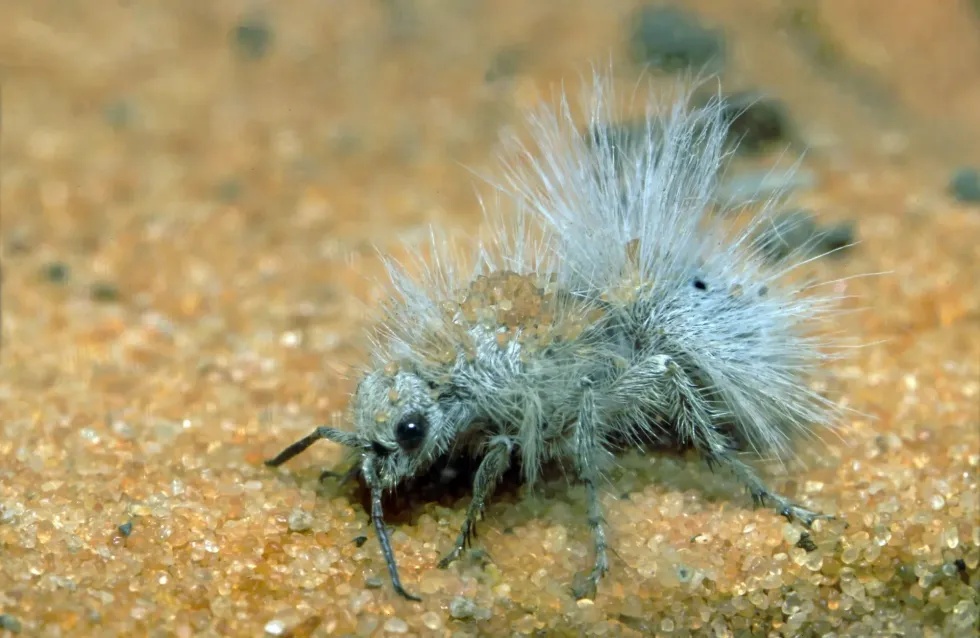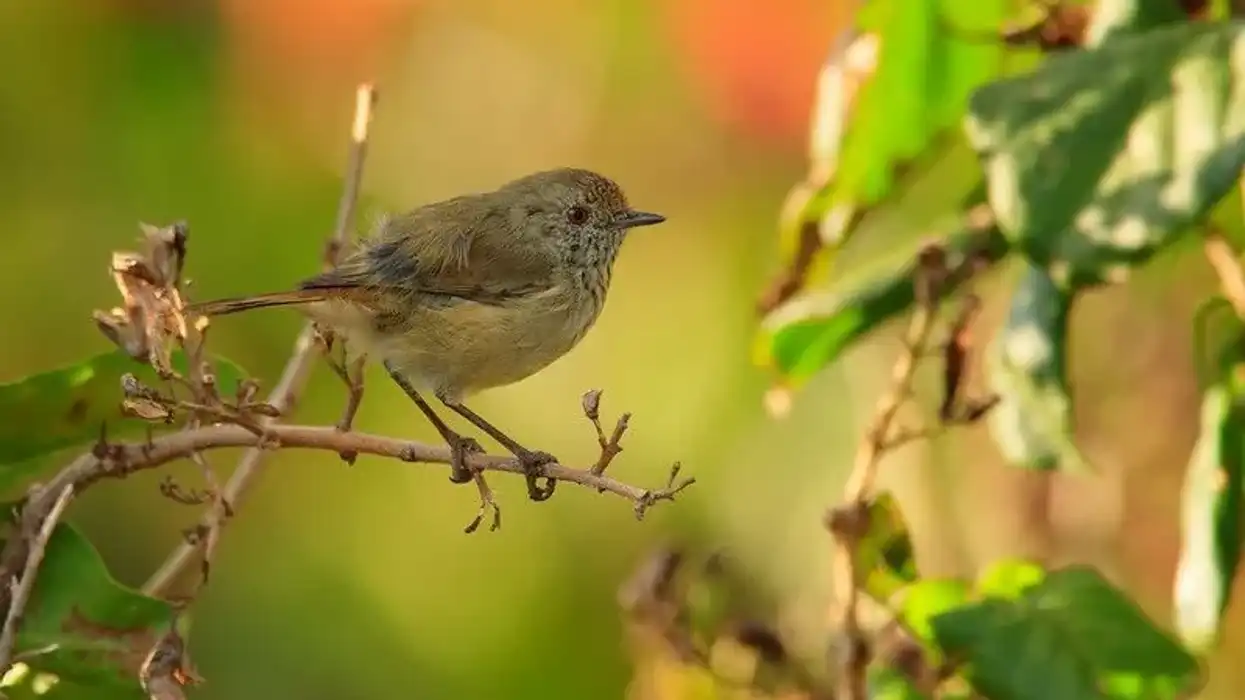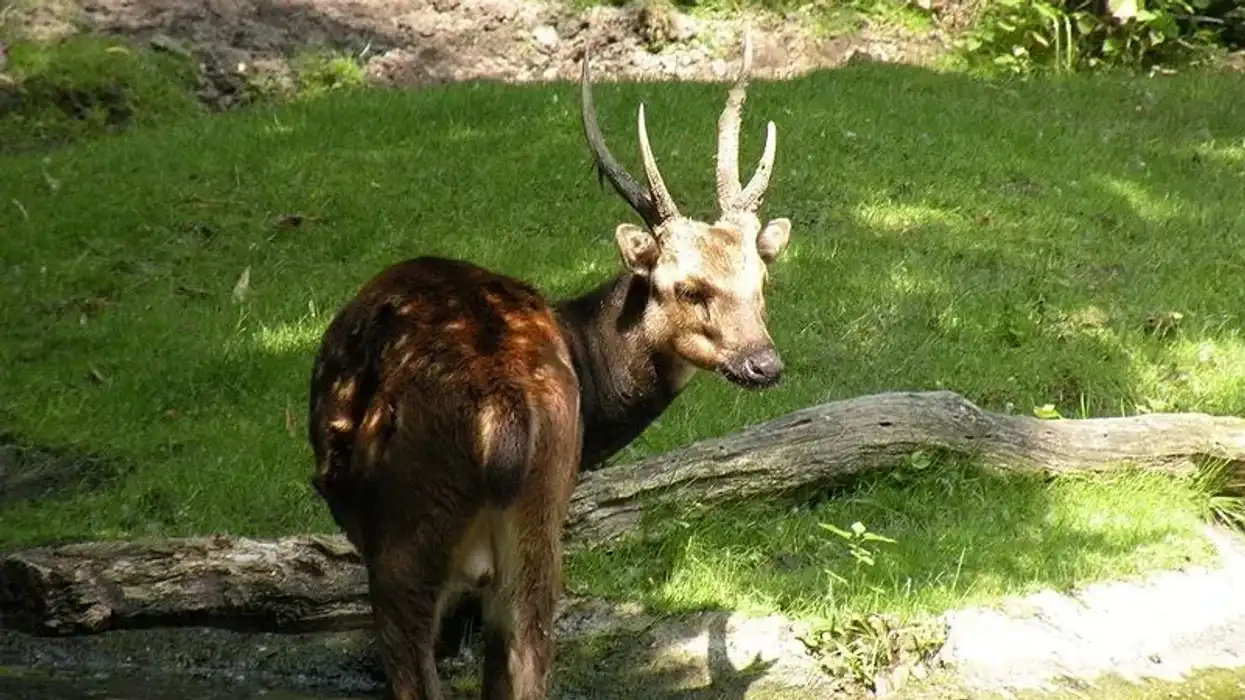The thistledown velvet ant (Dasymutilla gloriosa) is not actually an ant, but a type of wasp. This insect gets its name from its striking resemblance to an ant and because it is covered with fur.
These insects are found in the desert areas of Arizona, California, Nevada, New Mexico, Texas, Utah, and southern Mexico. According to statistics, North American velvet ants have been identified as one of the world's largest known Mullerian mimicry complexes.
Utah State University biologist Joseph Wilson has stated that that the evolution of white coloration on thistledown velvet ants is not only to camouflage itself and hide from predators but is also an adaptive mechanism to survive in the hot desert. The white fluffy exoskeleton can often be mistaken as a creosote bush or a creosote fruit.
These wasps are usually harmless, but the females sting if they feel threatened or predation pressure.
If you enjoy reading about thistledown velvet ants, you can even try reading about other different species at leafcutter ant and dung beetle.
Thistledown Velvet Ant Interesting Facts
What type of animal is a thistledown velvet ant?
Thistledown velvet ants are not ants but a species of wasps. They are often mistaken as creosote bush or creosote fruit.
What class of animal does a thistledown velvet ant belong to?
Thistledown velvet ants are a different species of wasp that falls under the Insecta class and belongs to the Mutillidae family.
How many thistledown velvet ants are there in the world?
The exact population of thistledown velvet ants is not known. According to a source, it was discovered that in Arizona, over an area of 1500 sq yd (1254 sq m), 6000 fluffy white wasps of this species were found.
Where does a thistledown velvet ant live?
These North American velvet ants are found mainly in Arizona, California, Nevada, New Mexico, Texas, Utah, and southern Mexico.
What is a thistledown velvet ant's habitat?
This species of wasp is seen living in the desert or areas near a desert. This species of wasp found in North America are adaptive to high temperatures due to their fluffy white coloration. Some people also mistake them as creosote fruit of the creosote bush.
Who do thistledown velvet ants live with?
The thistledown velvet ant uses its white coloration to camouflage itself inside the creosote bush. This insect is seen living amidst creosote fruits. They usually live in packs in the desert or they camouflage themselves like creosote fruits and live quietly inside the bush.
How long does a thistledown velvet ant live?
This insect has an extremely short lifespan. It usually lives for about a year.
How do they reproduce?
Thistledown velvet ants generally live alone after they evolve into adults. The males stay near the ground looking for females. Both males and females are attracted to each other because of pheromones.
Once they are done mating, the female looks for a safe place to lay the eggs near the host. After a few days, the eggs hatch and larvae come out of the eggs. The larvae feed on the host itself and in a day or two, they grow into full-grown wasps.
What is their conservation status?
The conservation status of thistledown velvet ants is Not Evaluated in the IUCN Red List. They are quite widespread in their range and are not facing any risk at the moment.
Thistledown Velvet Ant Fun Facts
What do thistledown velvet ants look like?
The male thistledown velvet ant (Dasymutilla gloriosa) and the female thistledown velvet ant are quite distinguishable. The males have wings and they fly near the ground looking for females.
The females, on the other hand, do not have wings but have long white hairs and are mistaken for a creosote fruit. The females tend to sting if they sense any sort of danger.
How cute are they?
These wasps which came into existence millions of years ago are one of the world's largest known Mullerian mimicry complexes. These hairy white thistledown velvet ants are usually harmless and have a cute appearance but tend to attack if they sense predators around them. These animals are small in size and look quite attractive.
How do they communicate?
These white and hairy creatures have evolved over many years and they use aposematism, also known as a warning signal, to stay away from predators. Whenever both a male and a female thistledown velvet ant sense predators around them, these ants will give out a squeaky sound to scare off the predators.
If they are harassed, the female might sting.
How big is a thistledown velvet ant?
The white thistledown velvet ant is about 0.5-0.6 in (1.3- 1.6 cm) in length. Their appearance and size are similar to fruit of the creosote bush. This wasp is almost the same size as a cuckoo wasp.
How fast can a thistledown velvet ant run?
The female thistledown velvet ant can run at a speed of around 0.3 mph (0.5 kph). The female has evolved in such a way that due to its lack of wings, unlike that of the male, its muscles are quite strong.
How much does a thistledown velvet ant weigh?
The exact weight of a thistledown velvet ant is unknown, just like a red paper wasp. However, since the thistledown velvet ant is quite small in size, they might not weigh much.
What are the male and female names of the species?
The male and female names for thistledown velvet ants are the same. Their scientific name is Dasymutilla gloriossa.
What would you call a baby thistledown velvet ant?
There is not a specific name for a baby thistledown velvet ant. They are born as larvae and then they gradually evolve into a full-grown thistledown velvet ant.
What do they eat?
The wasp's diet mainly includes water and nectar. The larvae are known to be parasitic in nature and they are known to eat larvae of wasps and bees.
Are they poisonous?
The female wasp's sting is known to be painful. A female wasp will sting only for self-defense.
The sting of a female wasp contains a venom which is called 'cow killers' that is quite painful. The sting is not toxic compared to the other species, but it is quite painful. Dr. Williams, a biologist stated that after getting stung, there is a burning sensation that lasts for about 30 seconds.
The males on the other hand poke when they feel any sort of danger. The poke can feel like a needle pricking. The males fake a sting which is enough to scare off predators.
Be very careful while handling a velvet ant as its appearance is quite deceiving. All in all, they are not very dangerous to humans.
Would they make a good pet?
It is advisable to not pet these wasps. They are quite timid in nature and the female tends to attack in self-defense whenever it feels any danger. Even though they are not that toxic, they are painful and can result in anaphylactic shock and also allergies. A sting can be fatal if immediate medical attention is not accessed.
Did you know...
Thistledown velvet ants have strong round outer shells that protect them from being crushed. This makes them quite hard to kill. However, these insects can be killed using an insecticide that works on wasps or bees.
The only known predators of this wasp are lizards.
Joseph Wilson, an associate professor in the Department of Biology of USU Tooele campus, said that the appearance of these velvet ants evolved to protect themselves from predators.
Joseph S Wilson, James Pitts and Jeni Sidwell from the Department of Biology at the University of Nevada and Matthew Forister, and Reno and Kevin Williams of the Food and Agriculture department discussed at length the evolution of white coloration and how velvet ants evolved in the 2020's 15th July publication of Biology Letters.
The biologists of the Department of Biology of Utah State University, University of Nevada, and Food and Agriculture Department of California stated that the thistledown velvet ant was present millions of years before the creosote fruit, so that cannot be a valid reason to justify the evolution of white coloration.
The biologists of the Utah State University also stated that these velvet ants are one of the world's largest Mullerian mimicry complexes.
Insects that possess this complex gives them the ability to camouflage themselves from predators.
The biologists also stated that the white coloration of these wasps or velvet ants was an adaptive measure to survive in the hot environment and this was published in the July edition of the Biology Letters. Joseph S Wilson, along with Sidwell, Pitts, Forister, and Williams found similarities in spectral reflectance between the creosote fruit and wasps.
Joseph S Wilson, Williams, Pitts, Sidwell, and Forister determined the internal temperatures and external temperatures using spectral reflectance as stated in the Biology Letters of July 2020.
How many eggs do thistledown velvet ant lay?
Thistledown velvet ants are known to lay no more than two eggs. The females lay the eggs in the host's larvae and then with time, the baby will emerge from the host itself.
What states are velvet ants found?
There are around 8000 species of velvet ants all over the world. Around 400 species are only seen in the North American Southwest. Some are found in the arid regions of southwest Canada.
Around 100 species of velvet ants are found in California. The eastern red velvet ant is found in the region between Connecticut and Florida and between Texas and Missouri. These ants are quite rare.
Here at Kidadl, we have carefully created lots of interesting family-friendly animal facts for everyone to discover! Learn more about some other arthropods from our weevil beetle facts and stingless bee facts pages.
You can even occupy yourself at home by coloring in one of our free printable Thistledown velvet ant coloring pages.










